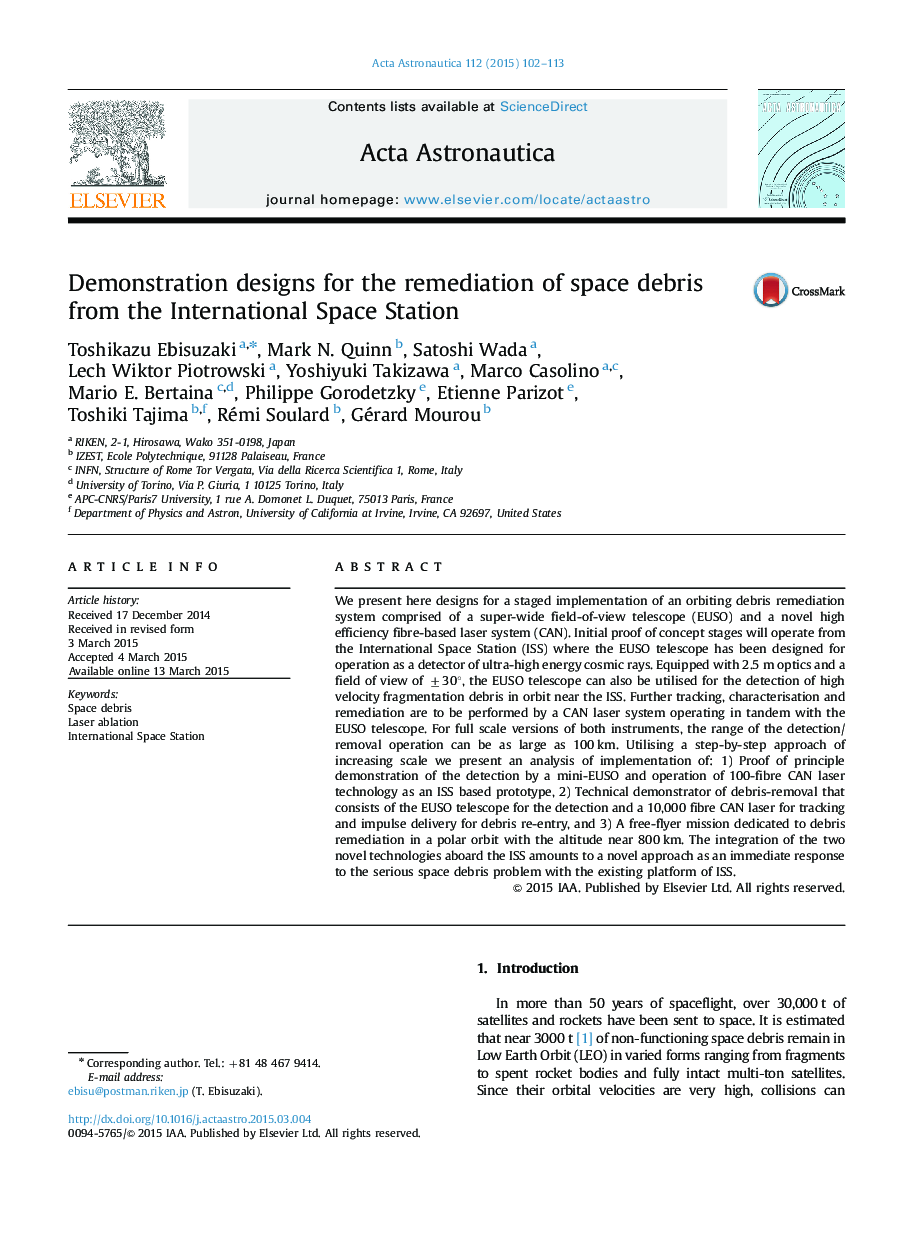| Article ID | Journal | Published Year | Pages | File Type |
|---|---|---|---|---|
| 8056606 | Acta Astronautica | 2015 | 12 Pages |
Abstract
We present here designs for a staged implementation of an orbiting debris remediation system comprised of a super-wide field-of-view telescope (EUSO) and a novel high efficiency fibre-based laser system (CAN). Initial proof of concept stages will operate from the International Space Station (ISS) where the EUSO telescope has been designed for operation as a detector of ultra-high energy cosmic rays. Equipped with 2.5 m optics and a field of view of ±30°, the EUSO telescope can also be utilised for the detection of high velocity fragmentation debris in orbit near the ISS. Further tracking, characterisation and remediation are to be performed by a CAN laser system operating in tandem with the EUSO telescope. For full scale versions of both instruments, the range of the detection/removal operation can be as large as 100 km. Utilising a step-by-step approach of increasing scale we present an analysis of implementation of: 1) Proof of principle demonstration of the detection by a mini-EUSO and operation of 100-fibre CAN laser technology as an ISS based prototype, 2) Technical demonstrator of debris-removal that consists of the EUSO telescope for the detection and a 10,000 fibre CAN laser for tracking and impulse delivery for debris re-entry, and 3) A free-flyer mission dedicated to debris remediation in a polar orbit with the altitude near 800 km. The integration of the two novel technologies aboard the ISS amounts to a novel approach as an immediate response to the serious space debris problem with the existing platform of ISS.
Related Topics
Physical Sciences and Engineering
Engineering
Aerospace Engineering
Authors
Toshikazu Ebisuzaki, Mark N. Quinn, Satoshi Wada, Lech Wiktor Piotrowski, Yoshiyuki Takizawa, Marco Casolino, Mario E. Bertaina, Philippe Gorodetzky, Etienne Parizot, Toshiki Tajima, Rémi Soulard, Gérard Mourou,
